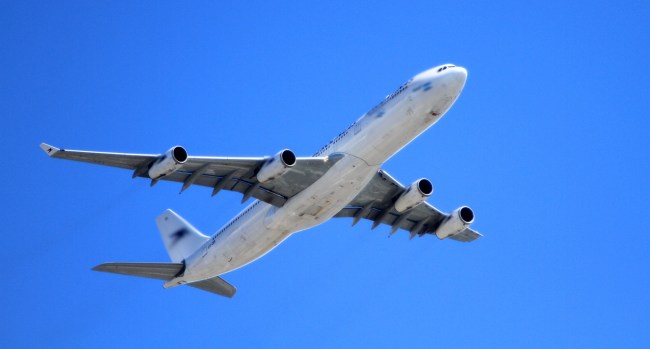
pixabay
We all miss traveling. I had more than a handful of trips I was looking forward to this Summer that were all canceled and this is around the time of year when I’d usually start planning out my annual NYE trip to Europe. Instead, I’m looking forward to a few days of ‘Staycation’ at the beach in the coming weeks but that’s about it on the schedule right now. I’ve recently had the itch to travel so bad I’ve been researching chartering flights with a small group of friends to/from the Caribbean but I’m not quite willing to shell out that much $$$ just yet.
This is all because I’m still pretty spooked by commercial aviation right now. And it’s not the actual flight that bothers me. The air in a plane’s cabin is ‘completely replaced 30 times every hour’ which is cleaner than hospitals. It’s the trip through security, sitting around in a terminal, and encountering a thousand new people along the way which bugs me out. But the question of ‘how safe is flying?‘ is at the forefront of everyone’s minds.
Arnold Barnett is a professor of management science at MIT and he’s sought to ‘quantify the odds of catching Covid-19 from flying’, a vital piece of information that I think everyone in America would like to have right now. What he’s found is the odds of catching coronavirus while flying is actually incredibly low. And the odds of dying after catching coronavirus while flying are much, much lower.
When the middle seat is empty the odds also change drastically so it is important to keep that in consideration when you’re choosing an airline right now. Here’s an excerpt from the article on Bloomberg:
“What Barnett came up with was that we have about a 1/4300 chance of getting Covid-19 on a full 2-hour flight — that is, about 1 in 4300 passengers will pick up the virus, on average. The odds of getting the virus are about half that, 1/7700, if airlines leave the middle seat empty. He’s posted his results as a not-yet-peer-reviewed preprint.
The odds of dying of a case contracted in flight, he found, are even lower — between 1 in 400,000 and 1 in 600,000 — depending on your age and other risk factors. To put that in perspective, those odds are comparable to the average risk of getting a fatal case in a typical two hours on the ground.”
Age is always a factor when weighing risk these days. The elderly will want to continue to be more cautious than younger travelers. But the risk of flying is relatively safe when you contextualize it. For instance, you have a 1-in-366 chance of getting into a car accident on a 1,000-mile road trip.
Everything we’re told about the spread of this virus has been that small/confined spaces lead to easy spread but the air being completely replaced in a plane’s cabin 30x every hour is pretty remarkable. The article on Bloomberg notes there hasn’t been a single ‘superspreading event’ linked to planes yet.
Despite the known dangers of enclosed spaces, planes have not been linked to superspreading events.
That’s not to say flying is perfectly safe — safety is relative. We need to start thinking in terms of risk-benefit ratios https://t.co/y1bKTsyKcJ pic.twitter.com/N8CHSg7q3O
— Bloomberg Opinion (@opinion) August 6, 2020
In spite of planes themselves being relatively safe, a recent Boston Globe survey of 15 epidemiologists found that 13 out of the 15 said they wouldn’t fly right now. Others like MIT’s Erin Bromage think that striking a balance between zero travel and normal life is appropriate:
“University of Massachusetts biology professor Erin Bromage says he is flying every week, as he advises federal, state and district courts on how to reopen while minimizing risks. Whereas many experts are taking a zero-tolerance for risk approach, he’s trying to find a middle ground — and helping others do it in a rational way.
He agrees with MIT’s Barnett, though, that it’s possible to transmit the disease to or from your close neighbors. He and Barnett both suggested that customers should, if possible, choose an airline, such as Jet Blue, that promises to keep the middle seat open. That cuts way back on the odds of getting or giving the virus. JetBlue also promises that solo travelers won’t have a neighbor in a two-seat row.”
You can read the full article on Bloomberg right here. The major takeaway here is that the risk of contracting the virus on a flight when the middle seat is open is relatively low while you are wearing a mask. Going through security and check-in can be troublesome if people are queued up in lines and then interacting with a whole new set of strangers when you arrive at your destination adds a lot of exposure, but the flight itself isn’t particularly risky.
Furthermore, this data can be used to ‘separate low-risk activities from high-risk ones’ as we are likely to live under these same conditions for months and months to come. So being able to adjust our behaviors accordingly to fit High and Low-Risk situations.